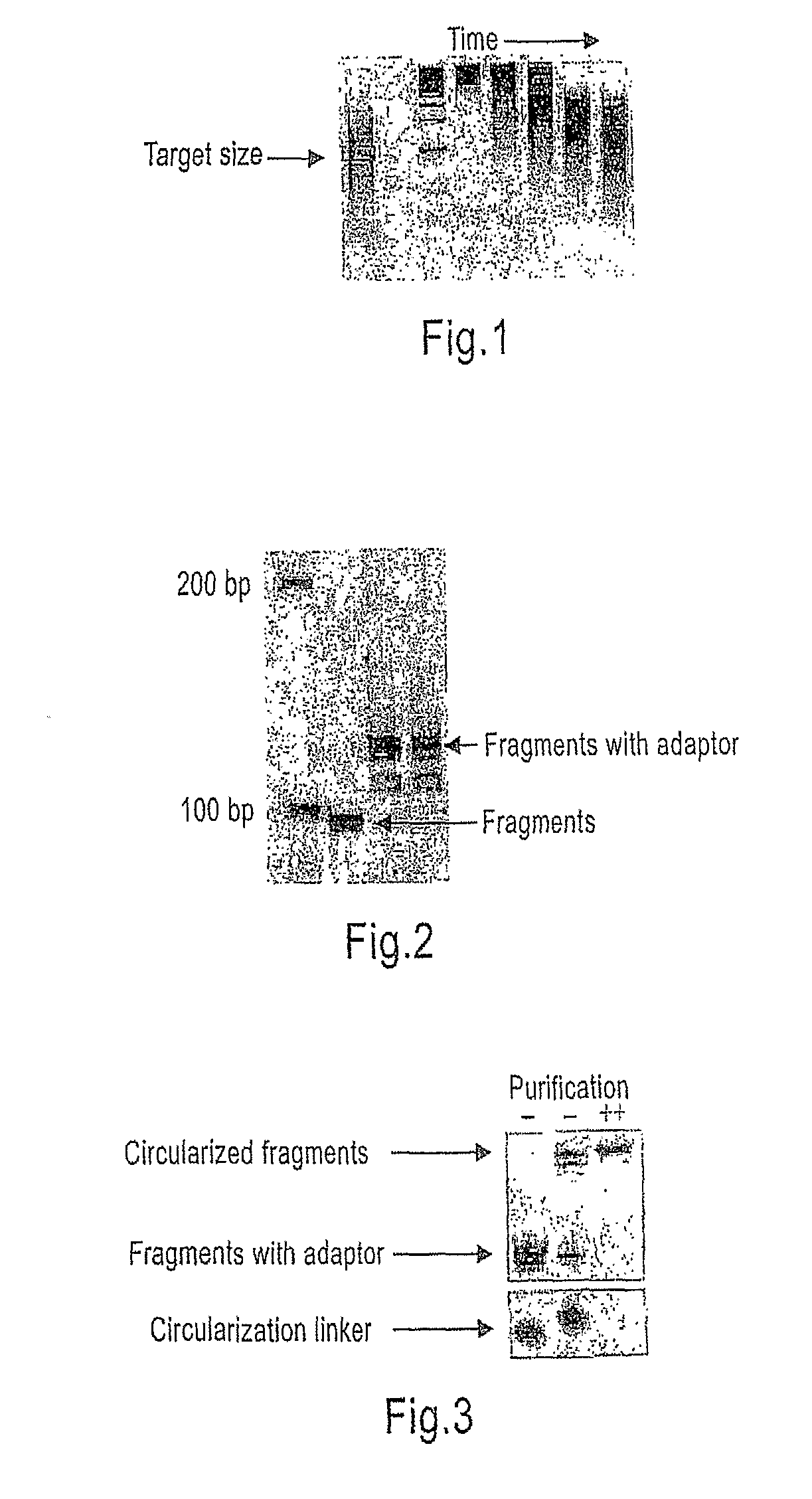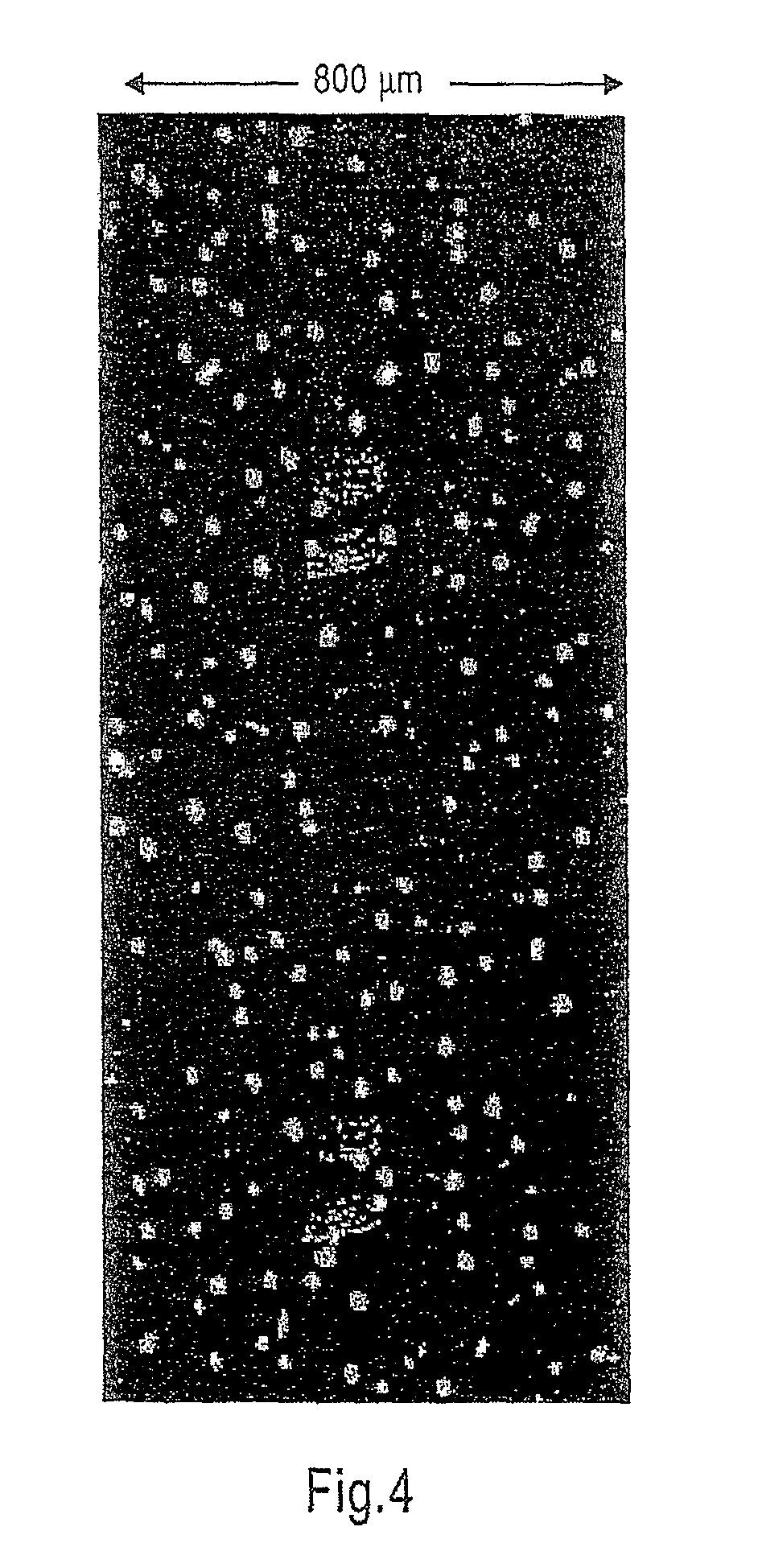Methods and means for nucleic acid sequencing
a nucleic acid and sequencing technology, applied in the field of methods and means for nucleic acid sequencing, can solve the problems of not easily scalable to ultra-high throughput sequencing, k will be limited by the number, and the task becomes even more difficult, and achieves time- and cost-effective, convenient and easy sequence, and rapid, efficient and cost-effective analysis and identification.
- Summary
- Abstract
- Description
- Claims
- Application Information
AI Technical Summary
Benefits of technology
Problems solved by technology
Method used
Image
Examples
example 1
Preparing DNA Templates for Cantaloupe
Input
[0200]Double stranded DNA template.
Template Fractionation:
[0201]The restriction enzyme CviJ I* (EURx, Poland) was used, which recognizes 5′-GC-3′ and cuts blunt in between. The restriction reactions were prepared as follows:
1 ug Template1.5 ug Template2 ug Template2x reaction buffer2x reaction buffer2x reaction buffer25 ul25 ul25 ul0.3 units CviJ I*0.3 units CviJ I*0.3 units CviJ I*Water to 50 ulWater to 50 ulWater to 50 ulTotal volumeTotal volumeTotal volume50 ul50 ul50 ul
Reactions were incubated for 1 hour at 37° C.
[0202]The cleaved DNA was purified with PCR cleanup kit (Qiagen) according to manufacturer's protocol.
[0203]A fraction was analyzed on a 2% agarose gel to identify the optimal reaction conditions for the specific batch of template and enzyme (see FIG. 1, lanes 4-8).
[0204]The optimal cleavage reaction was repeated to get a total of 5 ug DNA (FIG. 1, lane 1).
Template Size Selection:
[0205]The DNA was purified on an 8% non-denatur...
example 2
[0221]Preparation of Candidate Region Enrichment Fragments for Use with the Cantaloupe Sequencing Technology
Step 1: Selection of Regions for Enrichment and Probe Preparation
[0222]In order to enrich a nucleic acid sample for candidate regions of interest, prior to sequencing with the Cantaloupe technology, the following exemplary protocol may be used.
[0223]The average candidate region size, based on genome wide association studies in diseases or complex genetic traits, such as Crohn's and psoriasis, is about half a megabase (0.5 Mb). All candidate regions associated with the disease can be selected, but in this example, 3 distinct regions from different chromosomes (region H: 453.5 kb, region R: 285.5 kb and region E: 193.6 kb) were selected, that together cover a total of 932.6 kb. In addition, in a separate example, only region E (193.6 kb) was selected to verify the effect of size on the enrichment method of the invention
[0224]A probe set in this method refers to specific DNA mole...
example 3
Preparing Data DNA Templates for Sequencing by Cantaloupe
Step 1: Single Strand Production and Circularization
[0274]The purpose of this step is to retain only the phosphorylated single strand of the input double stranded target DNA generated in the second amplification step described in EXAMPLE 2.
[0275]The Dynabeads retained the input double stranded biotinylated and phosphorylated fragments. Incubation with 0.1M NaOH facilitated the release and isolation of the single stranded fragments of DNA containing the 5′-phosphate group necessary for the circularization step. The biotinylated strand is retained on the Dynabeads and the complementary strand is released in solution and used as input for the circularization step.
[0276]We formed single stranded circular molecules (necessary for use with the Cantaloupe sequencing technology) by denaturing the samples in the presence of the following biotinylated linker oligonucleotide:
(SEQ ID NO: 9)5′-BIOTIN-CGTCTTACGCGCCGGCGGAATCCGTCTTACGCGCCGGC...
PUM
| Property | Measurement | Unit |
|---|---|---|
| pH | aaaaa | aaaaa |
| pixel size | aaaaa | aaaaa |
| nucleic acid sequencing | aaaaa | aaaaa |
Abstract
Description
Claims
Application Information
 Login to View More
Login to View More - R&D
- Intellectual Property
- Life Sciences
- Materials
- Tech Scout
- Unparalleled Data Quality
- Higher Quality Content
- 60% Fewer Hallucinations
Browse by: Latest US Patents, China's latest patents, Technical Efficacy Thesaurus, Application Domain, Technology Topic, Popular Technical Reports.
© 2025 PatSnap. All rights reserved.Legal|Privacy policy|Modern Slavery Act Transparency Statement|Sitemap|About US| Contact US: help@patsnap.com



